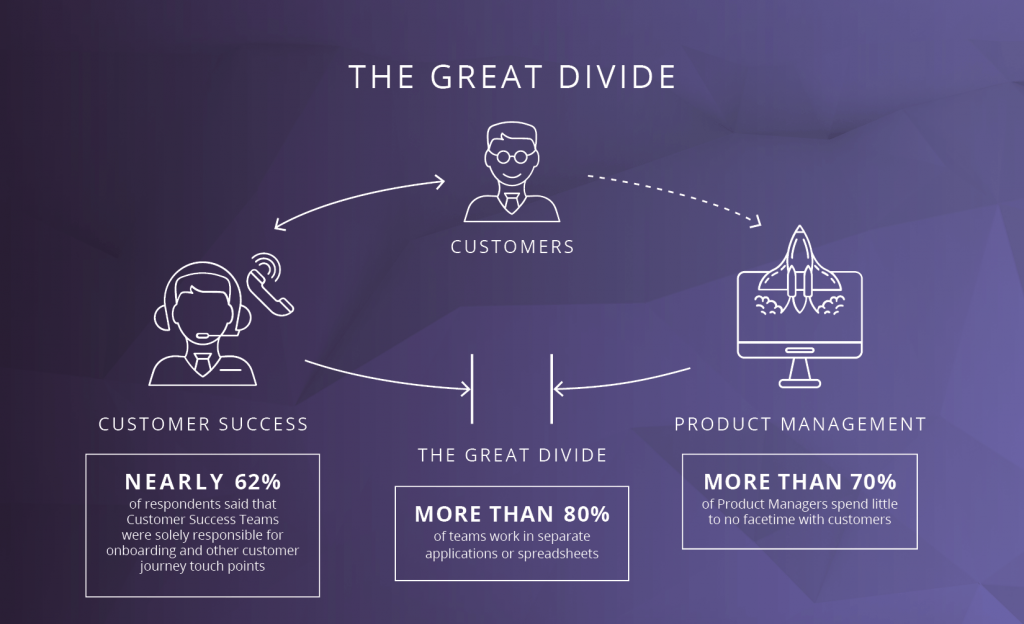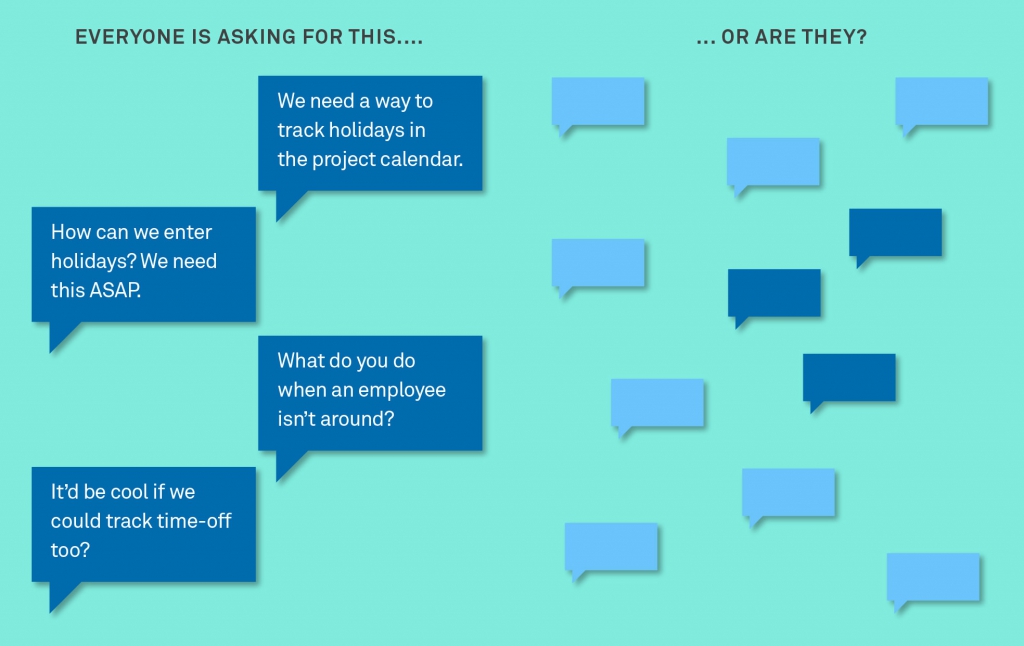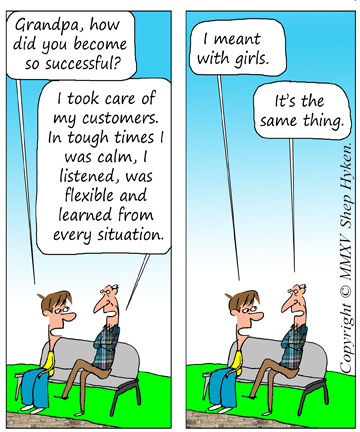There’s a blog post by AJ Tibando titled “Ideas are babies”.
“Generally people refer to your idea as your baby because of the deep personal and emotional connection you have to it.
You become naturally protective and defensive of your idea, wanting to tuck it under your wing, take care of it and raise it to succeed in this crazy mixed up world.”
– AJ Tibando
The “my baby” bias also sometimes applies to product managers and owners about what they’re building.
You have a vision for the product, you build it, you maintain it, you work hard on it every day. It’s your baby.
And then, PM’s are often perceived as the “gatekeeper”—the person that everyone goes to to “get things done”. These “things that need to be done” vary by person and by department.
You’re building a product and working hard to keep it alive. And then you have ten thousand people hounding you about it at the same time.
This can make you even more protective over what you’re building. It can feel like everyone’s constantly circling over you and your baby like vultures.

It’s your baby, and nobody knows better than you. Right?
Why it hurts
It’s natural to be protective over your product and what happens to it (up to a certain degree). However, being too protective over your “baby” will come back to bite you.
The problem with building SaaS products is that they need to be fluid. Things change, customers change, needs change.
Therefore, getting too stuck into what your idea of the product is can be detrimental either by:
- You not allowing things to change and not taking feedback, which means product is stagnant and customers are unhappy.
- If you do allow changes to happen based on external aspects moving but hate it, you become resentful.
Today, we’re going to talk about 3 things you can do to let go of your “baby” a bit, and not feel bad about it.
Talk to customers directly
In many companies, there is a huge disconnect between the product team and its users.
This is less of an issue in companies where everyone puts aside time to do support on a regular basis, like Buffer. However, everyone being in the front line every now and then is more of an exception than a common practice.
This means that information is relayed. Product owners hear about feedback from support, not customers. There’s not much context attached. It’s like a broken telephone.
There’s also a considerable gap in communication between product and success teams to begin with:

Besides being boring and depersonalized, this information can also potentially be very misunderstood.
Customers buy more and are more loyal to a company when there’s a name and face attached to the “team”. It works the same the other way around.
You’ll be more susceptible to feedback and understand it better coming straight from the source. Using product management software that offers feedback management (like Canny!) can really help with this.
You won’t be looking at a Trello card with a 3 word feature request on it. You’ll be talking to Chris from Canny who would be able to do his job a lot better if this feature was built.
Chris is a lovely guy. Not only that, but he’s the reason you even have a job.
That’s the kind of realization and emotional connection you can’t have with a barrier between you.
You should do this as regularly as you can:
- Take a few hours (or even minutes) each week and be in the front line. Answer support tickets, do customer chats on Intercom, etc.
- Schedule actual meetings with customers to understand them better.
Talking to your end users—as real people with concerns, emotions and personalities—will help you empathize and feel less protective of your baby.
Get to the bottom of issues
The worst thing you can do when someone wants to change something is get defensive right off the bat. Being the “gatekeeper” that everyone goes to with their demands makes it easy to get tired of it.
You’ll want to brush off issues just because you don’t want to deal with it—and that’s understandable.
A lot of people are bad at communicating their real problem. What will help you with not getting frustrated at this is creating context for yourself.
When you get told that someone needs a feature, a solution, or anything else, ask “why?”.
If you don’t get enough of an answer to help you create constructive context, ask “why?” again. Ask “why?” until you have identified the root issue.
This is very similar to the “faster horse” issue in customer feedback. Raw user feedback needs to be analyzed before using it as instructions for development.

You communicating with incoming internal feedback shouldn’t be any different. People just “asking you stuff” and “telling you to do something” is frustrating.
Creating constructive context helps you detach yourself from it. It’s never a personal attack.
Push until you have created a logical issue and a logical solution to an issue. It gives you back the control you usually lack in the flurry of “everyone’s asking me to do stuff”.
Make a list of why you’re doing what you’re doing
A PM’s work life can be hectic, disorganized, and frustrating a lot of the time. It’s easy to forget why you’re even doing what you’re doing.
It’s good to remind yourself every now and then why you even got into it in the first place:
- You like making things
- You like creating functional and beautiful products
- You like working with the people who make it all happen
This is to remind yourself that you like doing what you do. You’re also good at it.
Now that that’s established, remind yourself what you want the end result of all of it to be.
- Who are you creating these products for?
- Who’s using them?
- What do you want them to think and feel and achieve when they do?
- Do you think your end users would be proud of you over the way you’ve done things so far?
- Could you listen more to the people you’re doing it all for?
The purpose of this thinking is to realize that you’re not building a product for yourself.
You’re building a product for your customers. They need to be the main people who benefit from it. Your goal is to build a product so awesome and valuable that users are willing to pay for it and remain loyal.

In order to do that, you need their feedback, and change what needs to be changed for them.
Next time you get frustrated at what customers want not aligning with what you want, remind yourself who you’re doing it for.
Let your baby make mistakes
It’s ok to be a little protective of your baby.
However, you can’t keep it all to yourself, unchanged by the outside environment forever.
Much like real babies, you need to raise and mold your product to be able to survive out there. Eventually, it needs to go and do great things for someone else.
Outside influence, feedback, and constructive criticism will only make your product stronger.
You’ll be much more proud of what you’ve built in the end.
Want more product tips? Check out the top product management certifications.






